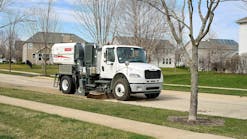For many stormwater agencies, there may be few obvious incentives and more headaches involved when considering whether to collaborate with local mosquito control agencies. However, the relationship between the California Department of Transportation (Caltrans) Stormwater Program and California Department of Public Health Vector-Borne Disease Section (VBDS) provides an example of how collaboration can be worth the effort. Since 1999, VBDS has worked closely with Caltrans to develop long-term, non-chemical solutions to reduce mosquito production in Caltrans’s structural stormwater BMPs. The decade-long working relationship has raised awareness, improved maintenance schedules, and led to the retrofit of many structures with features less likely to hold standing water.
These efforts have potentially reduced the risk of mosquitoes and disease to residents and visitors of surrounding areas while improving water quality through improved maintenance of BMPs. Some of the significant findings from the VBDS-Caltrans collaboration include:
- Most BMP designs had potential to hold standing water and produce mosquitoes, regardless of their water treatment function.
- Mosquitoes were often found year-round in BMPs, although their presence was difficult to predict for many reasons, including the occurrence of unexpected non-stormwater flows.
- The wide range of habitats created in BMPs allowed for production of many different mosquito species. Seventeen species were documented in California, including several capable of carrying diseases. The two most common species found in BMPs are also the most important vectors of West Nile virus in the state.
- Most BMPs were located within 500 meters of residential, commercial, and recreational areas, well within the flight distance of many mosquito species, reinforcing the fact that these structures can present a public health concern.
Recommendations made by VBDS to minimize mosquitoes in BMPs include the following:
- Stormwater can be detained for as long as four days without creating a mosquito concern throughout California. Water can be held indefinitely between October and April in certain high-altitude areas of the Sierra-Nevada greater than 5,000 feet (e.g., Lake Tahoe Basin) due to the harsh alpine climate lethal to larvae of disease-carrying mosquitoes.
- Replace loose rock riprap with designs less prone to hold water for longer than four days.
- Install tight-fitting covers and manhole cover inserts to minimize mosquito access to permanent sources of standing water in certain belowground BMPs.
- Maintenance and monitoring of BMPs should be proactive and include frequent inspections, particularly following rain events or where non-stormwater runoff is common.
- Aggressively trace and eliminate sources of non-stormwater runoff, including those that originate from other properties.
- Notify local mosquito control agencies of the locations of all new and current BMP structures to ensure mosquito concerns are addressed.






